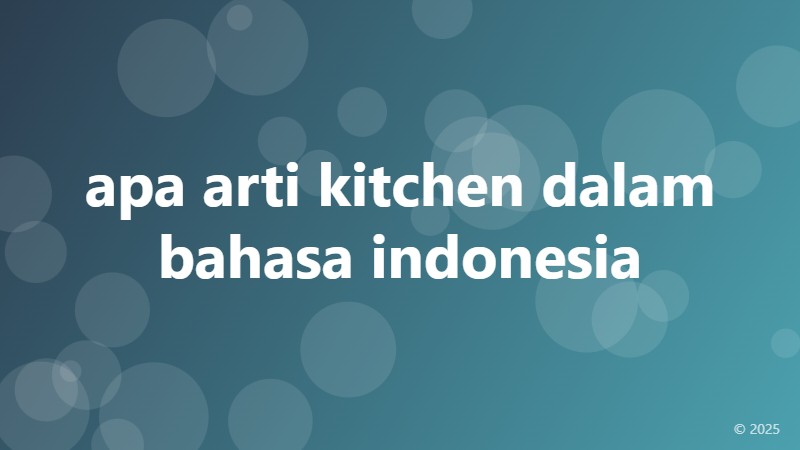apa arti kitchen dalam bahasa indonesia

The Meaning of "Kitchen" in Indonesian Language
In the Indonesian language, the word "kitchen" has a unique translation that might surprise you. While the term "kitchen" is widely used in English-speaking countries, its equivalent in Indonesian is not as straightforward as you might think.
A Brief History of the Word "Kitchen" in Indonesian
The word "kitchen" originates from the Old English word "cōcīn", which means "cooking place". As Indonesian is a language heavily influenced by Dutch colonialism, the word "kitchen" was borrowed from Dutch, which is "keuken". In Indonesian, the word "keuken" was later adapted to "dapur", which is now the standard term for "kitchen" in Indonesian.
The Indonesian Word for "Kitchen": Dapur
The Indonesian word "dapur" has a rich history and cultural significance. In traditional Indonesian architecture, the "dapur" is not only a place for cooking but also a central gathering point for the family. It's where meals are prepared, stories are shared, and memories are made. The "dapur" is often considered the heart of the home, reflecting the importance of food and family in Indonesian culture.
Understanding the Nuances of "Dapur" in Indonesian Context
In modern Indonesian language, the term "dapur" encompasses not only the physical space but also the art of cooking and the cultural significance of food. When Indonesians refer to "dapur", they often imply a sense of warmth, comfort, and hospitality. The "dapur" is a symbol of love, care, and nurturing, reflecting the strong emphasis on family and social bonds in Indonesian society.
In conclusion, the meaning of "kitchen" in Indonesian language is more than just a physical space for cooking. It's a cultural symbol that represents the heart of the home, the importance of family, and the joy of sharing meals together. Whether you're a food enthusiast, a culture lover, or simply interested in learning more about the Indonesian language, understanding the nuances of "dapur" can enrich your appreciation for this beautiful language and its rich cultural heritage.